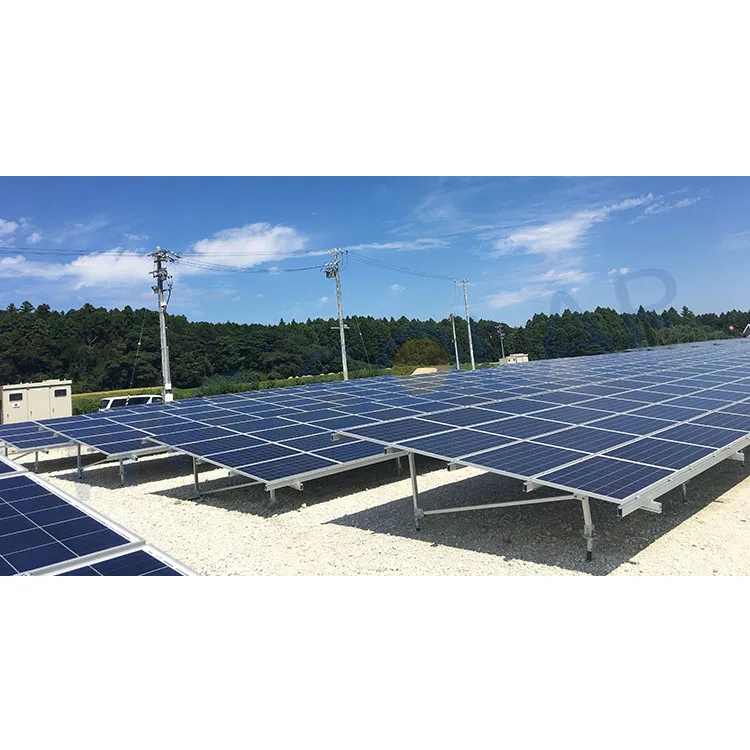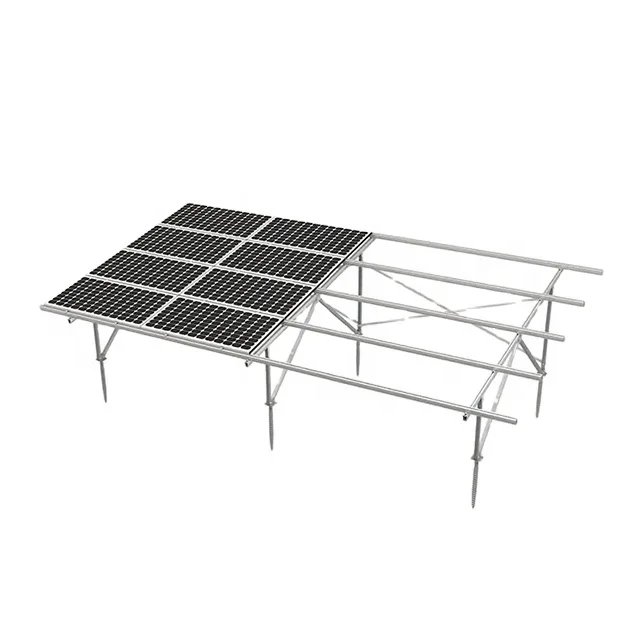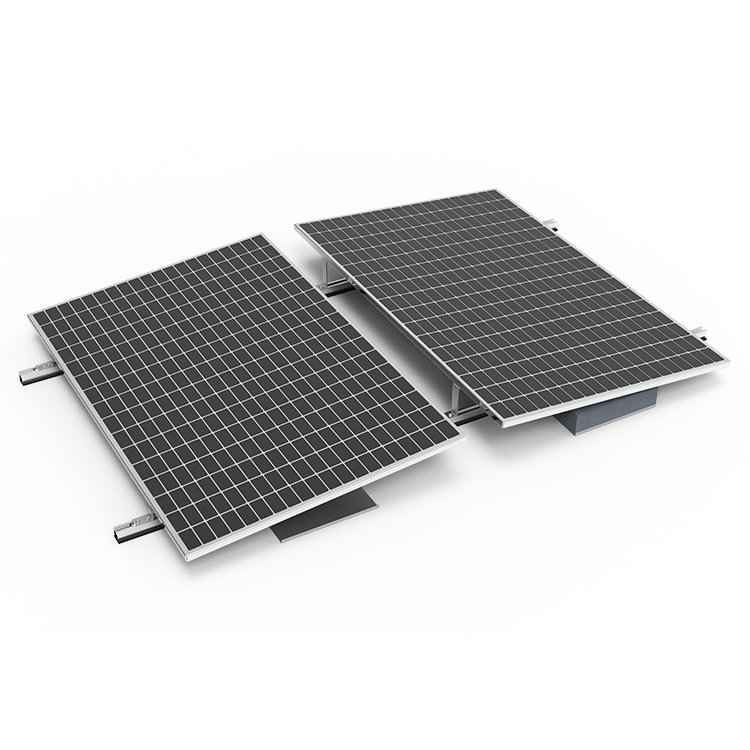-
2103 Room NO.322 Xinggang One Road, Haicang District, Xiamen Fujian, China

PV Solar Mounting: System Design and Foundation Choices
In the current global energy transition context, photovoltaic (PV) power generation, as a clean and renewable energy form, is receiving increasing attention. The selection and design of solar mounting supports and foundations for PV power generation systems, as crucial links in project construction, directly affect the system’s stability, safety, and economy. This analysis covers various applications, including Solar Mounting per solar carport mounting system, sistema solare a terra, solar roof mounting system, solar farm mounting system, and even specialized applications like solar floating mounting system.
Selection and Design of Solar Mounting Systems
Il solar mounting support system for a PV power generation system is the crucial structure that holds the PV modules. Its selection and design require comprehensive consideration of various factors, including sunlight conditions, wind speed, snow pressure, topography, and module type. The appropriate solar mounting system is essential for the longevity and performance of the entire installation, catering to diverse needs from residential rooftops to large-scale power plants.
Solar Mounting Systems Support Type
Based on the installation site and actual needs, solar mounting supports can be divided into various types such as Solar Mounting per sistema solare a terra e solar farm mounting system, Solar Mounting per solar roof mounting system, and specialized structures like Solar Mounting used in solar carport mounting system e solar floating mounting system. Tracking solar mounting systems, which enhance efficiency, can be integrated with various support types.
- Solar ground mounting system e solar farm mounting system: Suitable for ground-mounted PV power generation systems, with advantages such as simple structure, convenient installation, and lower cost. However, issues such as foundation treatment, wind resistance, and seismic resistance need to be carefully considered for these large-scale installations.

- Solar roof mounting system: Ideal for rooftops, requiring consideration of the roof’s load-bearing capacity, waterproofing, wind resistance, and seismic resistance. These solar mounting systems typically utilize lightweight materials to minimize the load on the building structure.
- Solar carport mounting system: Designed to serve the dual purpose of providing shaded parking areas while hosting PV panels for electricity generation.
- Solar floating mounting system: Utilized for deploying PV arrays on water bodies, offering benefits such as land conservation and potentially improved panel cooling.
When selecting the support type, a comprehensive consideration based on the project’s actual conditions and budget should be made to choose the most cost-effective option for the intended application, whether it’s a ground-mounted array, a rooftop installation, a carport, or a floating platform.
Solar Mounting Systems Material
The material selection for solar mounting supports is also crucial, influencing the durability and lifespan of the sistema solare a terra, solar roof mounting system, solar farm mounting system, solar floating mounting system, and solar carport mounting system. Common materials for solar mounting include aluminum alloy, steel, and stainless steel.
- Aluminum alloy Solar Mounting: Frequently used in various mounting systems, including many solar roof mounting system designs, due to its light weight, corrosion resistance, and ease of installation.
- Steel Solar Mounting: Preferred for its high strength and load-bearing capacity, often utilized in sistema solare a terra e solar farm mounting system where larger structures and greater stability are required. Anti-corrosion treatment is essential for longevity.
- Stainless steel Solar Mounting: Offers superior corrosion resistance, making it suitable for solar floating mounting system e solar carport mounting system in potentially corrosive environments, although it typically comes with a higher cost.
When selecting support materials for solar mounting, a comprehensive consideration of the material’s performance, cost, and service life should be made to choose the most suitable option for the specific demands of the sistema solare a terra, solar roof mounting system, solar farm mounting system, solar floating mounting system, or solar carport mounting system being implemented.
Solar Mounting Systems Structural Design
The structural design is a core aspect for any solar mounting system, ensuring stability and safety against various loads. This is particularly critical for the sistema solare a terra, solar roof mounting system, solar farm mounting system, solar floating mounting system, and solar carport mounting system, each facing unique structural challenges. Considerations include wind loads, snow loads (especially for solar roof mounting system e sistema solare a terra in certain regions), and the self-weight of the structure and panels. The solar mounting design must adhere to relevant national standards and specifications to guarantee the safety and longevity of the installation, regardless of whether it’s a sprawling solar farm mounting system or an elevated solar carport mounting system.
Selection and Design of Foundation for Solar Mounting Systems
The foundation of a PV power generation system is the crucial structure that supports the solar mounting supports and modules. Its selection and design also require comprehensive consideration of various factors, including geological conditions, support type, and load requirements. The type of foundation is particularly important for the stability of a sistema solare a terra e solar farm mounting system.
Selection of Foundation Type
Based on geological conditions and solar mounting support types, foundations for PV mounting systems can be divided into various types, including reinforced concrete independent foundations (common for sistema solare a terra), reinforced concrete strip foundations, helical steel pile foundations (increasingly popular for solar farm mounting system due to ease of installation), reinforced concrete pile-column foundations, and rock anchor foundations. The choice depends on site characteristics and the specific requirements of the sistema solare a terra, solar roof mounting system, solar farm mounting system, solar floating mounting system, or solar carport mounting system. Notably, solar roof mounting system solar mounting often relies on anchoring to the existing building structure rather than dedicated ground foundations, while solar floating mounting system solar mounting utilizes buoyant structures.
Design of Foundation Size and Depth
The design of foundation size and depth is a critical aspect of ensuring the stability and safety of solar mounting supports, particularly for sistema solare a terra e solar farm mounting system. It requires comprehensive consideration of various factors such as support structure, load requirements, and geological conditions. For solar roof mounting system solar mounting, the focus shifts to secure attachment to the roof structure and load distribution. Solar carport mounting system solar mounting foundations need to support the elevated structure, while solar floating mounting system solar mounting design emphasizes buoyancy and anchoring.
Foundation Construction and Quality Control
Foundation construction and quality control are important aspects of ensuring the effectiveness of solar mounting support and foundation selection and design. Strict adherence to design specifications and quality control measures are essential for the longevity and safety of any PV installation, be it a sistema solare a terra, solar roof mounting system, solar farm mounting system, solar floating mounting system, or solar carport mounting system. Proper construction ensures the structural integrity required to withstand environmental stresses and maintain optimal performance over the system’s lifespan.








